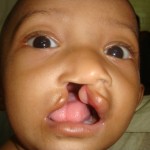
Cleft lip and palate is one of the most commonly encountered congenital abnormalities. Traditional outcomes measures have focussed on measures such as anatomical measurements morbidity and mortality. Increasingly patient-reported outcomes measures (PROMs) such as aesthetic results, speech and quality of life are being used. The main aim of this review was to identify existing cleft lip and palate–specific instruments that have undergone formal development and validation.
The databases Medline, CINAHL (Cumulative Index to Nursing and Allied Health), and PsycINFO (PsychologicalAbstracts) together with the references of the retrieved studies were searched for English only articles reporting PROMs.
They found 44 measures that had been used in cleft lip and palate studies. However 15 ad hoc questionnaires, eight generic instruments, 11 psychiatric instruments, and one non-English language questionnaire were excluded. This left nine measures for assessment.
- Of these, four were never validated in the cleft population.
- Analysis revealed one craniofacial-specific measure (Youth Quality of Life–Facial Differences), two voice-related measures (Patient Voice–Related Quality of Life and Cleft Audit Protocol for Speech–Augmented), and two oral health–related measures (Child Oral Health Impact Profile and Child Oral Health Quality of Life).
- The Youth Quality of Life–Facial Differences, Child Oral Health Impact Profile, and Child Oral Health Quality of Life questionnaires were sufficiently validated. None was created specifically for clefts, resulting in content limitations.
The authors concluded
There is a lack of comprehensive, valid, and reliable questionnaires for cleft lip and palate surgery. For thorough assessment of satisfaction, further research to develop and validate cleft lip and palate surgery–specific instruments is needed.
Eckstein DA, Wu RL, Akinbiyi T, Silver L, Taub PJ. Measuring quality of life in cleft lip and palate patients: currently available patient-reported outcomes measures. Plast Reconstr Surg. 2011 Nov;128(5):518e-526e. Review. PubMed PMID:22030513.
